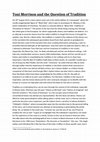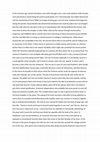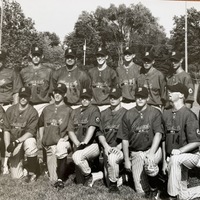Papers by Soham Chakraborty
A historiographical study of Works by William Faulkner and Tennessee Williams.

On 28 th August 2013 a news report came out in the online edition of a newspaper 1 about the raci... more On 28 th August 2013 a news report came out in the online edition of a newspaper 1 about the racially inappropriate figure of "Black Pete" who is seen to accompany St. Nikolaus in the Dutch celebration of Christmas. The piece is curiously titled as "Black Pete: Tradition or Throwback to Slavery?" This points to the fact that the whole thing is being seen through the white gaze of the European, for whom supposedly slavery and tradition are distinct. It is an attempt to exorcise slavery from the white tradition to forget the horrors it brought for another race. But for a black writer, the tradition is rooted in the violence of the slavery era, in the narratives the subsequent generations heard from their parents or grandparents which became a part of the narrative they were creating themselves and giving a voice to erstwhile silenced attempts at self expression-ones that were not paid any heed to. Here, as I attempt to delineate Tony Morrison and her treatment of tradition in her novels, (especially The Bluest Eye, Sula, Tar Baby and Beloved) and her non-fictional writings, I will take into consideration memory, parent-child relationships, Names and her overall use of history and myths in consolidating her tradition in her writings and try to show how important a role the idea of tradition itself plays in these novels. As a parallel I would use a set of essays by Alice Walker and the novel "Ceremony" by Leslie Marmon Silko to show through walker that the importance of tradition in the black context finds resonance in other chief writers too (almost all black writers, but I choose Walker as a fellow female compatriot of Morrison) and through Silko's Native Indian narrative that in cultures other than the blacks which have been marginalised by the whites in the US, the path of resistance is to hold on to one's own traditions. For Morrison, tradition is the source of inspiration, and she moves above just her own racial past and goes on to identify with the Greeks as a source of inspiration and with whom the black art has lots in common.

In the Victorian age, Sexual inclinations were often thought to be a very male attribute while fe... more In the Victorian age, Sexual inclinations were often thought to be a very male attribute while females were perceived as mostly being the passive participators of it. Homosexuality was widely denounced and the imprisoning of Oscar Wilde on charges of being gay is one of many incidents that happened during this period. Sexual identity also determined emotional and creative aspects as it was thought that the male when he was done in the act of reproduction after having fertilized the woman, had more time to direct his energies in other fields; whereas the woman through menstruation, pregnancy and childbirth had to commit more time and energy to these exclusively sexual activities and thus had little time or energy or mental prowess to indulge in anything else. While sexual promiscuity was acceptable in the man, the woman had to stick to one partner and her failing to do so caused her to be 'fallen'. Celine Varens in Jane Eyre is a fallen woman and remains so, whereas Bertha Mason is fallen due to her mental instability which might also symbolize the excess passion











Uploads
Papers by Soham Chakraborty